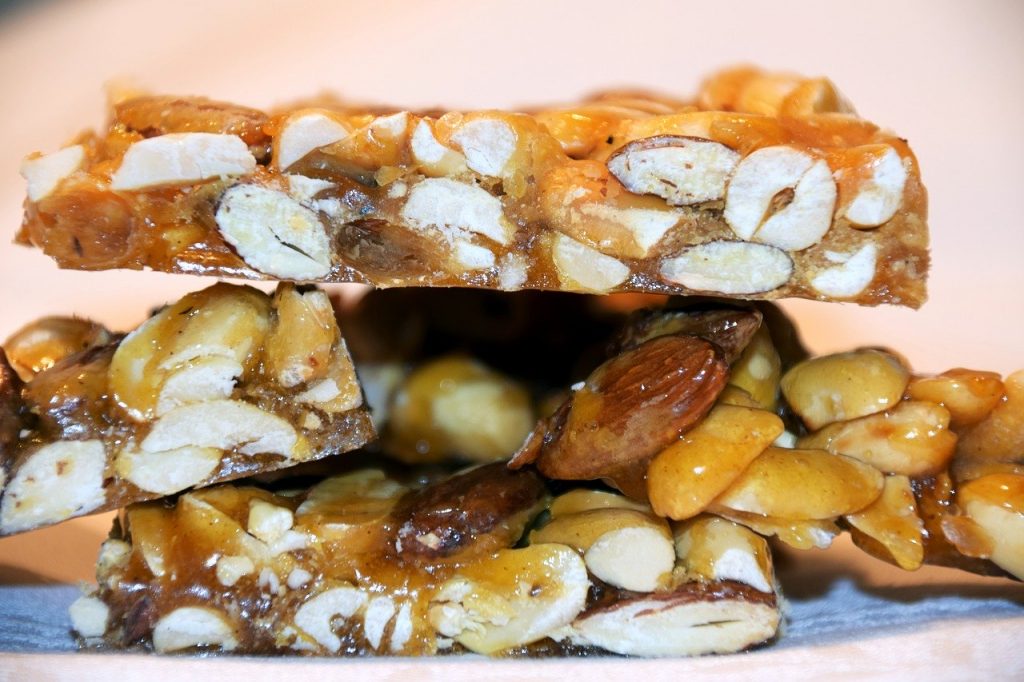Successful candy making requires achieving the desired degree of sugar concentration for a quality product. Recipes that work at sea level need temperature adjustments when being prepared at higher elevations, directly related to changes in the boiling point.

High Elevation Adjustment for Candy
For each 1,000 feet above sea level, reduce the recipe’s temperature(s) by 2°F.
- This adjustment allows the candy maker to control the degree of evaporation necessary to achieve the proper sugar concentration for the desired end product.
At sea level, the boiling point of water is 212°F, but for every 500 feet above sea level, the boiling point decreases by 1°F due to less resistance on surface molecules. For example, at 5,000 feet water boils at 202°F, which is 10 degrees less than at sea level. The lower the boiling point, the quicker evaporation occurs, so at higher elevations, this faster loss of water can result in a sugar mixture either becoming too hard or grainy if the recipe is not adjusted for the elevation.
High Elevation Candy Making (Sugar Solution) Adjustments
| Product | Cold Water Test | Color of Solution | Finish Temperature | ||
|---|---|---|---|---|---|
| Sea Level | 5,000' | 7,500' | |||
| Cream candies and filling | Soft Ball | Clear | 234-240˚F | 224-230˚F | 219-225˚F |
| Chew candies | Firm Ball | Clear | 244-248˚F | 232-238˚F | 227-233˚F |
| Pull candies, fillings and frosting with egg whites | Hard Ball | Slight color | 250-260˚F | 241-258˚F | 235-253˚F |
| Toffees | Soft Crack | Yellowish | 270-284˚F | 260-280˚F | 255-275˚F |
| Brittles | Hard Crack | Light golden | 300-308˚F | 290-300˚F | 285-295˚F |
For every 1,000 feet elevation above sea level, decrease the temperature(s) in the recipe by 2˚F. (Example: You live at 10,000' and your recipe indicates a finish temperature of 236˚F. 10 x2˚F. = 20˚F, so your adjusted finish temperature is 236˚F- 20˚F=216˚F.)
Selecting and Using a Candy Thermometer
Candy thermometers are available in variety of styles and are a worthwhile investment for the candy maker. Candy thermometers should measure to at least 400°F, come with a clip to attach to the side of the pan, and be easy to read.
- Analog models display
the temperature using colored alcohol on a ruler-like bar or a needle on a round
dial.
- NOTE: If you are using an older candy thermometer that contains mercury, if breakage occurs, treat and dispose of it as hazardous waste! Safe and quick mercury clean-up information is available at: http://www.atsdr.cdc.gov/mercury/docs/ResidentialSpillCleanup.pdf.)
- Digital models use electronic sensors to measure the heat and display the output on an LCD or LED screen. One of the main advantages of digital over analog thermometers is that the temperature is displayed in just a few seconds.
For those without a thermometer, cold water tests can help determine the various stages of sugar cookery (shown in Table 1 above).
About Sugaring in Candies
Grainy candy is often a result of sugar crystals finding their way into the candy as it cooks or cools. This applies to both types of candies – the crystalline such as fudge, divinity and fondant and the non-crystalline such as taffy, caramel, and brittle.
Tips to Avoid Sugar Crystal Formation:
If the recipe calls for butter (always use unsalted butter unless your recipe specifies otherwise), grease the sides of the saucepan before adding other ingredients.
- First bring the liquid to a boil.
- Remove pan from the heat and add sugar.
- Return pan to the heat, cover with a lid, and leave long enough for the mixture to boil and develop steam to wash down the crystals from the sides of the pan.
- Uncover the pan to permit evaporation.
- Do not stir after uncovering, but continue cooking until mixture reaches desired temperature (measured with thermometer) or concentration (using cold water test).
- Allow candy to cool undisturbed. Any agitation will cause the sugar to crystallize and result in sugary candy.
- For non-crystalline candies (i.e. taffies, caramels and brittles), hold the saucepan within an inch or so of the cooling pan when pouring. Never scrape the last of the syrup.
For more information on high altitude cooking, the downloadable CSU Extension High Altitude Food Preparation Guide is available at: http://extension.colostate.edu/topic-areas/nutrition-food-safety-health/high-altitude-food-preparation-p41/.


